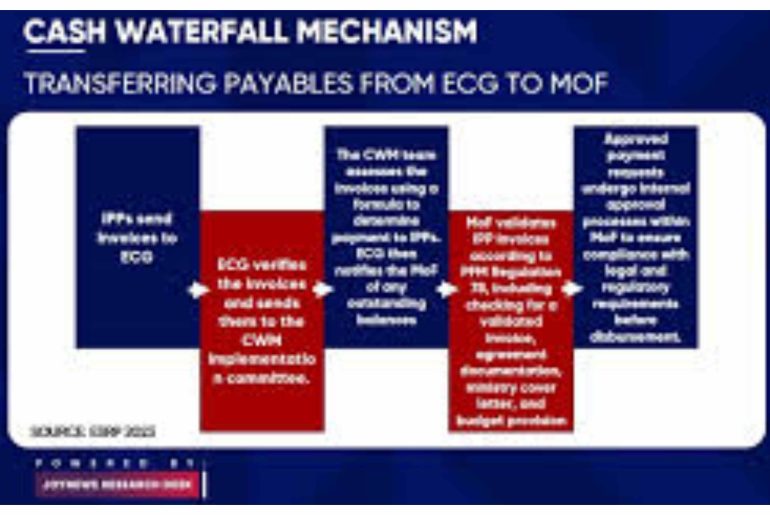The implementation of the Cash Waterfall Mechanism in April 2020 as part of the Energy Sector Recovery Programme aimed to ensure fairness and transparency in distributing energy revenues among electricity distribution companies.
This initiative was crucial for reducing the energy sector deficit and preventing future shortfalls.
A financial analysis by the Ministry of Energy, supported by the Power Africa Transactions and Reforms Program, revealed a projected revenue shortfall exceeding USD 12.5 billion by 2023. Factors contributing to this shortfall included excess power generation and gas supply, unpaid electricity bills from some MDAs, technical and commercial losses, inadequate electricity tariffs, delays in applying the Automatic Adjustment Formula, and delays in completing gas infrastructure projects.
To address challenges faced by the Electricity Company of Ghana (ECG) in adhering to existing guidelines, the President and Vice President directed revisions to the Cash Waterfall Mechanism under the Energy Sector Recovery Programme. The revised guidelines aimed to enhance the mechanism’s effectiveness and ensure compliance. As part of this directive, the Public Utilities Regulatory Commission was tasked with appointing independent auditors for quarterly audits of ECG and NEDCo collections and disbursements.
The restructuring of the Cash Waterfall Mechanism into two payment levels, Level A for Independent Power Producers (IPPs) and Level B for local State-Owned Enterprises (SOEs) and other generators, was a significant step. ECG renegotiated with IPPs for a monthly payment of US$43 million to six IPPs, with the remaining collections distributed to SOEs and other generators using the CWM formula.
ECG was directed to operate a single holding account for customer revenues and conduct quarterly audits to ensure compliance with the Cash Waterfall Mechanism. The Ministry of Finance would cover any payment shortfalls identified in reconciliations with the CWM team and the MoF.
The process of transferring payables from ECG to the Ministry of Finance involved a series of steps, including validating invoices and conducting internal approvals to ensure compliance with legal and regulatory requirements before disbursement. The goal was to streamline payments to IPPs and SOEs and avoid delays in settling outstanding balances.

